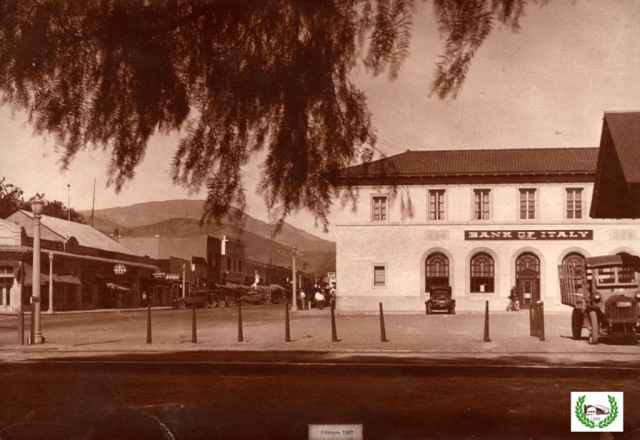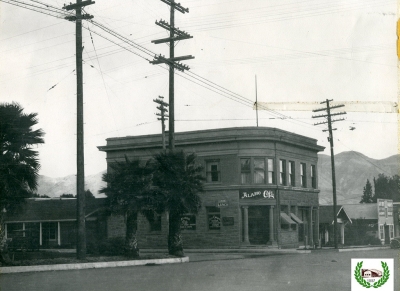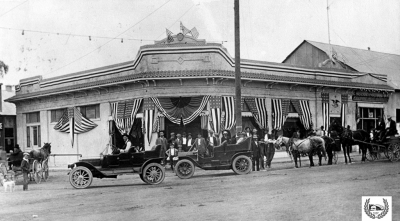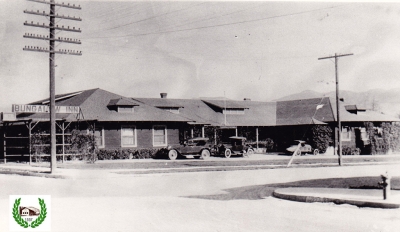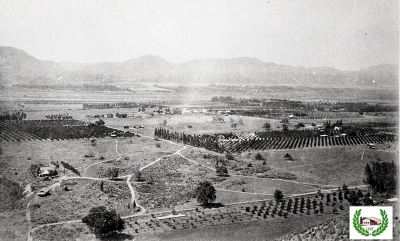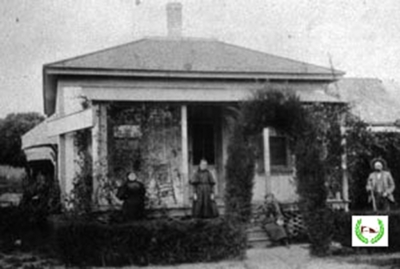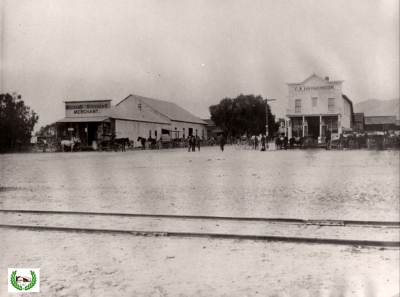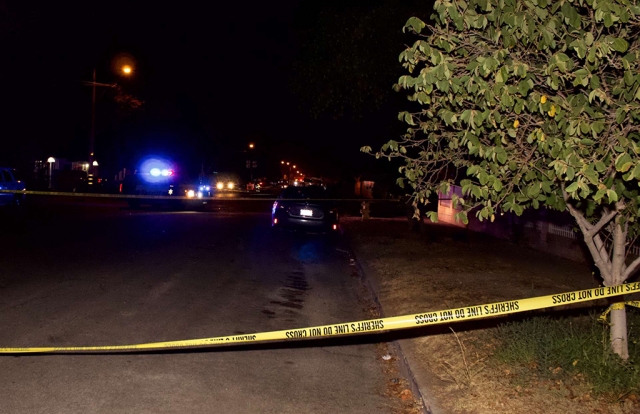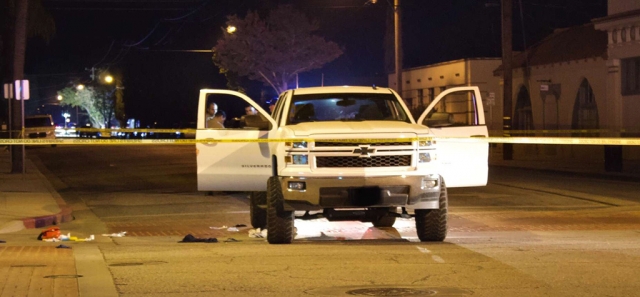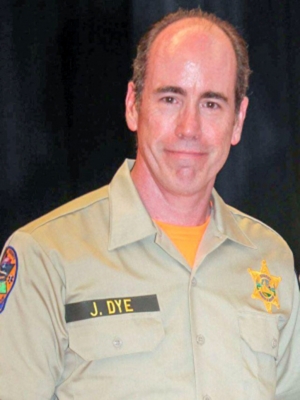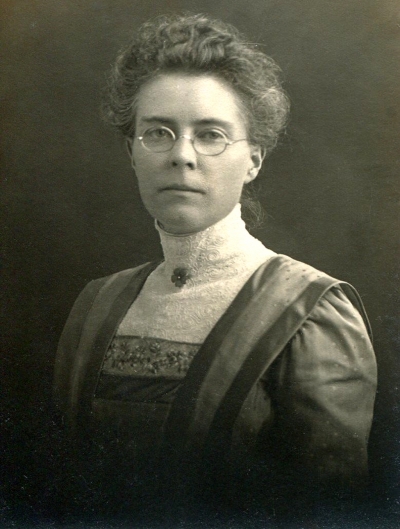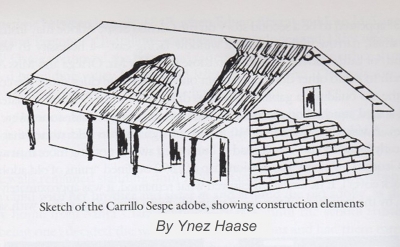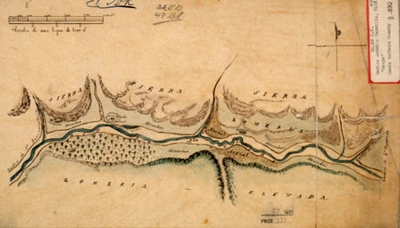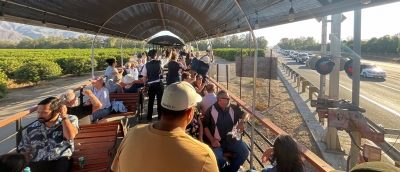|
By Anonymous — Wednesday, July 21st, 2021
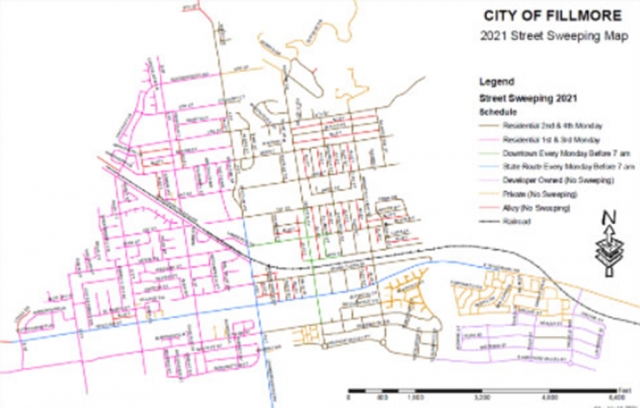 Want to know when your street is being cleaned? Check out the map above! If you have further questions contact the City at 805-524-1500, ext. 234. Enlarge Photo |
|
By Anonymous — Wednesday, July 21st, 2021
Courtesy Fillmore Historical Museum I went shopping in Ventura the other day. The trip wasn’t at all inconvenient. It was a 35 minute jaunt each way in a comfortable car. On the road, I started thinking about my grandparents and great grandparents and how they met their needs for food, clothing and everyday items. The early settlers grew their own fruits and vegetables. They hunted for deer and fished the Santa Clara and Sespe Rivers for Steelhead trout. Most had a cow for milk and cattle, pigs or chickens for meat and eggs. Being self-sufficient was a necessity of life. To purchase what they could not produce themselves they would travel by horse or wagon to Ventura or later to Santa Paula, each journey out and back taking most of the day. At times, when the need arose for a large purchase such as a wagon or large farming tool, the trip had to be made to Los Angeles. The trip could take several days given that no rivers or streams had bridges and weather could be inclement in the winter. One of the earliest merchants in our area was Norman Kellogg. He arrived in 1876 and settled on the east side of what is today, the Pole Creek channel. (At the time, Yellow Creek, as it was called, crossed from the canyon on the east to Sespe Creek. It would be decades before the creek was named for Pole Canyon and its channel moved to flow south into the Santa Clara River.) Kellogg built a home with a small store. Most of his sales, however, were done from his traveling grocery and supply wagon. The area he served was from a few miles east of Santa Paula to the Castaic area. He kept this business going until the arrival of the railroad in 1887. The arrival of the railroad changed this way of life completely. Santa Paula and Ventura were just a short train ride away and a trip out and back to Los Angeles could be accomplished in a day. By the late 1890s the Sears, Roebuck catalogue made mail order a common method of purchasing everything from nails to clothing to houses or even a dairy silo. In 1887, just before the arrival of the railroad, Elbert Bailey Turner had built and was the proprietor of Fillmore’s first rooming house, the Cottage Inn. C.C. Elkins spent his first night in Fillmore, with his family in Turners’ Inn. They had traveled 3 days by wagon from Compton and arrived in Fillmore on Christmas Day. The inn was on the northwest corner of Main and Central, very near the new tracks and depot. The railroad’s arrival in Fillmore in 1887, quickly encouraged development of the local community now named Fillmore after a vice president of the Southern Pacific. The first stores were built north of the tracks and close to the Inn along the railroad right of way. These first businesses included a lumber yard, the rooming house, a general store built in 1888 by C.C. Elkins, a pool hall, fruit stand and, of course, a saloon. The general area became Main Street. By 1895 there were about 150 people living in and around Fillmore. In April, 1933, Mrs. E. B. Turner wrote in a letter to the editor of the Fillmore Herald about access to food in the 1890s. She explained that there were “no stores or vegetable wagon every day at your door. Our meat was shipped from Ventura by the Hobson Brothers. Easly of Santa Paula furnished most of our vegetables. E. B. Turner butchered a hog now and then and Alfred Stone killed deer. He sold the best parts to us. I pickled beef and sides of pork to help out. We had a pen of fat chickens, paid 5 cents for a five or six pound young rooster so you can see it was not a fool’s job to take care of our little business.” Much of the business developing in Fillmore catered not only to those residing in Fillmore but to the many farmers and cattlemen living in the outlying areas. In 1911 the Bungalow Inn was built to cater to train passengers. It had 20 guest rooms and an excellent dining room. The dining room not only served travelers, it also served as a meeting place for civic groups and local families. As the town grew, more businesses were started. Saturday afternoons were busy as the farmers and their wives came to town to do the weekly shopping. Those long trips by wagon to Santa Paula and Ventura were less necessary. And when need or desire required a shopping trip to the “big city”, Los Angeles, the train made the trip quicker and easier. In a very short time Fillmore became self-sufficient. Locals could purchase food, clothing, farming supplies and equipment locally. One of the first general merchandise stores in town was built in early 1888 by C.C. Elkins. It was on the northeast corner of what would become Central and Main Street. It was a two story wooden building with the store on the first floor and an apartment on the second floor. The first shipment of groceries for the store arrived in late January, 1888. According to C.C., he gave credit to many of the locals during the year since they didn’t received payment for their crops but once a year. He was quoted as saying, “I never lost any money to amount to anything.” The store was also the location of the post office and a voting place for many years Richard Stephens built one of the first permanent structures, a grocery store, north of the railroad tracks on the corner of Main and Central Ave. It was finished in 1911 and remains in its original location on the northwest corner of Central Ave. and Main St. Today it is known as La Estrella Market. As you enter, look down and you will see the Stephens name in tile. Stephens had built a large warehouse behind his first store in the 1890s and eventually turned it into one of the first theaters in Fillmore. It was located right behind his grocery store and was a popular venue for traveling vaudeville entertainers. The theater building was there until about the mid-1950s when it was torn down. Today, in 2021, the Treasure Station is located in front of what was that theater. The Fillmore State Bank, Fillmore’s first bank building was built in 1905 on the southeast corner of Santa Clara and Central. Construction was of brick with a facing layer of Sespe brownstone. The Fillmore library was on the second floor and for many years the local Masonic Lodge met in a large upstairs room. When the bank built a larger building in 1917 on the corner of Main and Central, the old bank building was used for many different purposes including a restaurant, a liquor store and the current realty office. The library also moved to the second floor of the new bank building. This bank became the Bank of Italy in 1927, then Bank of America, Bank of A. Levy and today, 2021, an empty shell used as a movie set. The upstairs area of the old building on Central and Santa Clara was modified into apartments and the façade of Sespe brownstone removed. The brownstone is now a wall in Bardsdale. In the decade between 1910 and 1920 there was a building boom on Central Ave. as wood framing, concrete and brick replaced the simpler wooden structures. In 1919 the Farmers and Merchants Bank was built on the corner of Sespe and Central. Eventually it became the Security Pacific National Bank and today, is a dental office. The three-story Fillmore Masonic Temple building on the corner of Sespe Ave. and Central Ave. was also built in 1919. The ground floor was home to a grocery store on the corner, a variety of other businesses along Sespe and Central and a new post office building on the corner of Sespe and the alley between Central and Fillmore Streets. The 1994 earthquake brought the building down and the site is now vacant. Over time research at the museum has identified more than 900 businesses in Fillmore, Sespe and Piru. In future stories we will be highlighting these businesses and their contributions to their communities. |
|
By Anonymous — Wednesday, July 14th, 2021
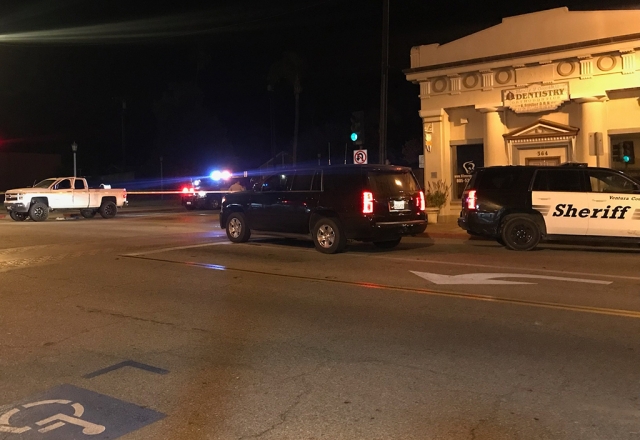 On Friday, July 9th, 2021, at 11:50pm, the Ventura County Sheriff ’s Department, Fillmore City Fire and AMR paramedics were dispatched to a reported fight involving 15-20 people in the area of Sespe Avenue and Clay Street. Arriving deputies encountered a possible stabbing victim at the intersection of Sespe and Central Avenue. Fire and paramedic personnel were dispatched to the scene. Minutes later an additional stabbing/shooting victim was reported at Sespe Avenue and Clay Street. A second ambulance was requested. Both patients were transported to VC Medical Center, condition unknown. Sheriff’s deputies established the crime scene with additional units from neighboring cities responding to assist. There were no initial reports of any suspect descriptions or information. Photos courtesy Angel Esquivel-AE News. Enlarge Photo |
|
By Anonymous — Wednesday, July 14th, 2021
 On Wednesday, July 7th, 2021, at 9:39pm, Fillmore Sheriffs, City Fire and AMR paramedics were dispatched to a reported hit & run involving a parked car in the 600 block of Fernglen Circle. Arriving fire crews reported two vehicles with one person with minor injuries. No ambulance transported was not required. Cause of the crash is under investigation. Photo courtesy Angel Esquivel-AE News. Enlarge Photo |
|
By Anonymous — Wednesday, July 14th, 2021
Sheriff Bill Ayub will announced the dedication of the Jef Dye Memorial Highway, to honor the service of Fillmore Search & Rescue Team member Jeffrey “Jef” Dye, who was killed on Interstate 5 on the Grapevine while providing medical aid to victims whose vehicle overturned during a winter storm on Feb. 2, 2019. During the rescue, a vehicle left the highway and struck several SAR Team members, including Jef, who died as a result of his injuries. Jef will be honored for his selfless service to the community. |
|
By Ventura County Sheriff Department — Wednesday, July 14th, 2021
The Fillmore Police Department would like to thank the community for the outpouring support and assistance over the Fourth of July holiday weekend. With the help of the community, the Fillmore Police Department responded to numerous crimes in progress, safely removed two subjects driving under the influence of alcohol from the roadway, and issued 24 citations for violations of illegal fireworks. In total, 12 citations were issued to residents of Fillmore and 12 citations were issued to residents visiting our community from Camarillo, Oxnard, Moorpark, Sacramento County, and Los Angeles County. Prepared by: Deputy J. Labbé Ventura County Crime Stoppers will pay up to $1,000 reward for information, which leads to the arrest and criminal complaint against the person(s) responsible for this crime. The caller may remain anonymous. The call is not recorded. Call Crime Stoppers at 800-222-TIPS (8477). |
|
By Anonymous — Wednesday, July 14th, 2021
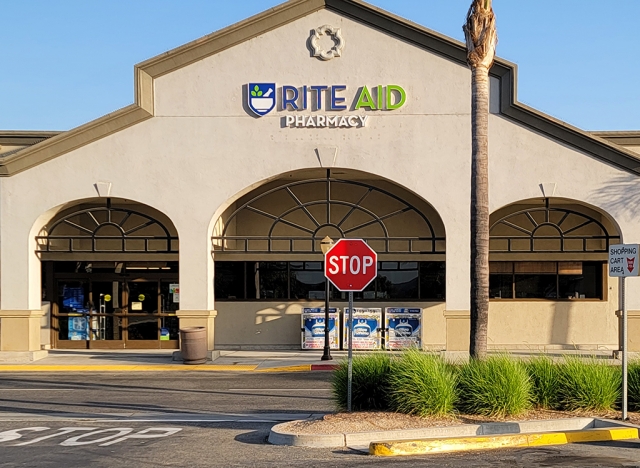 Rite Aid will be closed to all traffic except for the pharmacy due to complete remodeling. Several weeks ago the store suffered a late night water pipe burst which flooded the entire premises. The pharmacy will remain open during the work. Enlarge Photo |
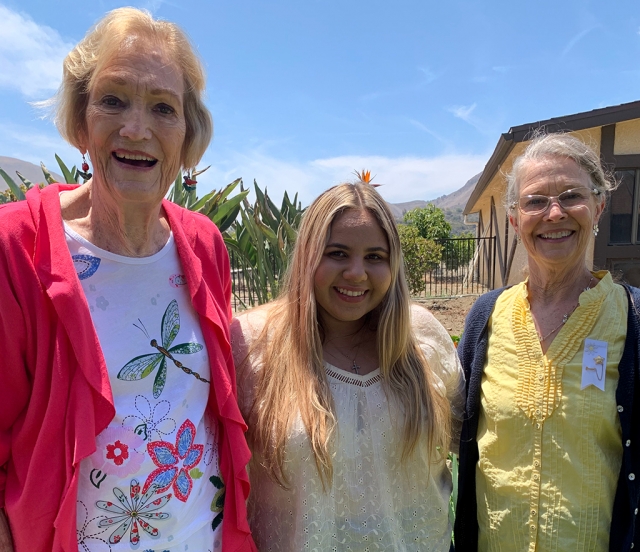 (l-r) Pat Morris Award Committee Chair, Jordyn Blankenship, and PEO President Jan Lee. Photo courtesy Martha Richardson. Enlarge Photo By Anonymous — Wednesday, July 14th, 2021
Back in June of this year the PEO (Philanthropic Education Organization) Fillmore Chapter GY enjoyed a brunch at Martha Gentry’s home. Pat Morris, PEO Award Committee Chair was delighted to present the 2021 Educational Award to Senior, Jordyn Blankenship. Jordyn’s mother Tonya and grandmother Margaret were also there for the presentation. A second celebration took place that day, which was a birthday cake to honor member, Maxine Merry, for her 90th birthday. Her daughter, Jeanne was also in attendance for the events. |
|
By Anonymous — Wednesday, July 14th, 2021
Courtesy Fillmore History Museum Prior to 1833, the area which would become Fillmore and Bardsdale was under the governance of the Mission San Buenaventura. Few Europeans lived in the area and it was primarily used for cattle grazing. This changed in 1833. Mexico had gained its independence from Spain some years earlier and in 1833 the Mexican Government passed the Secularization Act which cancelled vast land concessions which had been given to the various Missions. Instead land was granted to individuals. To apply for a land grant, one had to make a request in writing to the area governor, describing the land he was interested in and giving its dimensions and boundaries. This would be accompanied by a map or diseño, illustrating what was requested in the petition. If approved, the governor would issue a formal declaration and the property would be surveyed and the boundaries established. The recipient then was required to build a house on the land; stock it with cattle; plant some portion in vines, fruit trees or grain. Don Carlos Antonio de Jesus Carrillo was the eldest of seven children born to José Raymundo Carrillo and Tomaso Lugo. They were married at the Carmel Mission in 1781 in a ceremony presided at by Junipero Serra. The Carrillos were a distinguished family, their line including an Archbishop of Toledo and a viceroy of Mexico. In 1829, prior to the Secularization Act, Don Carlos petitioned the Mexican government for Rancho Sespe. He already had extensive holding in what would become Santa Barbara and Ventura Counties, including Santa Rosa Island. Because he had a large extended family (Ten children and at least 50 grandchildren) he needed additional lands to support them. His petition he requested land that ran “from an arroyo called Piru which at its mouth unites with that of Camulos, to the hill which faces another arroyo named Mupu.” This was basically from the Piru River to Santa Paula Creek. He received his property in 1833 naming it Rancho Sespe. On the deed it specified 6 square. leagues or 54 square. miles or 34,560 acres. Two copies of the deed were filed, and this is what sowed the seeds of later disputes and even murder. On the second copy there was an erasure and instead of 6 square leagues it read 2 square leagues. This opened the door for later settlers to claim land which Don Carlos, and later owner, T. Wallace More, believed they owned. That dispute is another chapter in the story of Rancho Sespe. For further information go to https://www.fillmorehistoricalmuseum.org/rancho-sespe. The grant extended from Santa Paula creek on the west to Piru Creek on the east, approximately 17 miles. The ranch was centered about where the Sespe River meets the Santa Clara River. Three years after Don Carlos and his family received the ranch it was supporting 3,000 head of cattle, three or four droves of horses and mules, and approximately 400 sheep. An adobe was built as was required by the grant, but the Carrillo family did not live on Rancho Sespe. They were residents of Santa Barbara. Carrillo’s Mayordomo, Prudencio Ayala, who was in charge of the Rancho may have lived there. The Carrillos may have stayed there when they came to the Rancho for the “round-up” of the cattle. At that time there could have been as many as fifty family members and additional servants and guests. The adobe as it has been described could not have housed that many individuals. Grace Atmore, who died in 1943, remembered playing at the ruins of the adobe on her way home from the Santa Clara School. She remembered it as being rectangular with six or seven rooms. Eventually the school trustees felt the structure unsafe and had it torn down. According to some historians the adobe was just north of the Santa Clara River, west of the mouth of the Sespe and close to the historical sycamore tree on Hwy 126. Other writers of local history located the adobe just south of the point where the Sespe meets the Santa Clara. 1848 saw California becoming a territory of the United States. The Treaty of Guadalupe Hidalgo guaranteed the property ownership of the existing settlers, but the Federal government soon challenged the legal status of every Spanish/Mexican land grant. A Board of Commissioners was created to review the legal proof each claimant was required to submit. Don Carlos Carrillo filed his proof shortly before his death in 1852. His wife, Josefa, was his primary heir, but she died in 1853. In April of 1853, the Board of Commissioners ruled that the land grant was valid and encompassed six square leagues. This would soon be challenged but by then the Carrillo family would not be in the picture. In the summer of 1853, the probate court of Santa Barbara ordered that the ranch be sold at public auction with the proceeds to be divided among the Carrillo heirs. The successful bidders were three brothers, T. Wallace, Henry and Alexander More, who bought it for $17,500, a little over $600,000 in today’s dollars. After twenty years, this ended the Carrillo involvement in Rancho Sespe. Their son was probably the most well-known offspring, the actor Leo Carrillo. |
 Pictured is Dave Wilkinson’s personal business car, Car 409, with farewell banner on back. It was built in 1929 for Santa Fe Railway as a superintendent’s car for a railroad executive. Photos courtesy Nichols Martinez, Onboard Service Manager (F&W), Vice President SCRVRHS. Enlarge Photo By Anonymous — Wednesday, July 7th, 2021
trains.com / Published w/o permission Fillmore & Western Railway has been sold. They owned seven locomotives and 30+ cars (passenger and freight). All cars range in years from the 1910s to 1970s. Due to a confidentiality agreement, no further information was available. |


